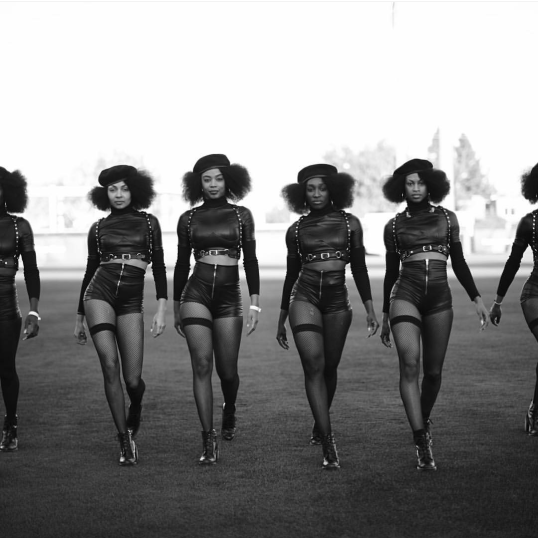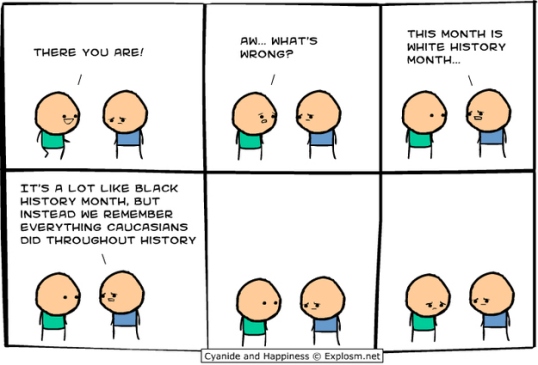Delusions of Grandeur
Beyoncé’s Formation has triggered a tsunami of white tears. There has been an influx of white rage over the perceived messages that were presented in the artwork. I have seen a great deal of commentary & criticism making a few of the same baseless claims: Beyoncé is racist, divisive, anti-police, supports hate groups & that the Super Bowl was not the time or place to push her political agenda.
Clearly, through the eyes of many white people, any mention of the disproportionate police brutality against ‘minorities’, is to insult their service or to spew hate towards all police, not just the bad ones. That any mention of systematic racism & it’s lingering effects is, within itself, an act of racism. By this special kind of logic, to mention the poor outcome of any action, is to perpetuate that action yourself. Many are also claiming that to associate with the Black Panther Party, is to condone or support every single facet of it.
Obviously, too many of these people are unaware of the concept of constructive criticism. They seem to not understand that it’s possible to appreciate & respect something or someone, yet still not let the good they do give them a pass on the wrong they do. If you care about something or someone, don’t you want them to be the best they can be? The police have always had corruption & violence issues since its inception, so for these things to be eliminated, or reduced as much as possible, isn’t it necessary to address them? The first step to solving a problem, is to acknowledge that there is one, is it not?
Foolishly, many people are claiming that the Black Panther Party, at its creation, was an organization based in hate whose main objective was calling for senseless violent acts against white people based solely on their race. Despite the fact that the BPP virtually never engaged in any such activity & that most of any violence they promoted or acted out was strictly as a means of self-defense, white people still feel the need to bring it up as if it’s relevant & even go so far as to compare the group to the KKK, who actually did act out the hate & violence that they preached. They also conveniently never seem to be aware that the BPP did many great things for their communities that were struggling as a direct result of systematic racism, which was implemented by whites. White people are mad about the existence of the BPP & any support for or praise of the group, but consistently fail to mention that it only exists because of the actions of white people. They never want to acknowledge the fact that had America always treated all their citizens as if their lives mattered, the BPP, BET, Affirmative Action, Black Lives Matter, minority scholarship programs & every other government program or racially exclusive organization tailored specifically for PoC (people of color), exists because of white supremacy/privilege. Too often do white people whine about the symptoms of systematic racism, but don’t want to address the disease itself.
Arrogantly, perhaps due to centuries of policing black people & structuring their acceptable amounts & types of blackness, far too many white people continue to feel they have a right to tell black people when, where, how & which parts of the black experience they are allowed to discuss, celebrate or portray. They also too often believe that they somehow obtained the credentials to determine how long it should take black people to “get over” 500 years of living within a racist society. Too many believe that it’s their place to tell others what they should or should not care about. They are too often more concerned about getting black people to stop mentioning systematic racism (because it makes them feel bad [white tears] even though they can’t experience it) than they are about finding ways that they themselves can help end it.
Historically, whites have always glorified their terroris- excuse me, heroes – who in most instances, were violent criminals whose rise to fame & power involved the murder, robbery & exploitation of PoC. I live in the South & there are statues, monuments & streets all over the place named after Confederate soldiers & generals who participated in wars that fought, in part, to maintain their right to keep blacks enslaved. There are housing developments named after plantations. Many white people take pride in these killers & are thankful for the carnage they left behind, as it gave way to the white privilege they all benefit from today. Even those who came later, like the mob & folks like Bonnie & Clyde are hyped. Ted Bundy, Charles Manson & several other serial killers are found to be fascinating, their evil often attributed to mental illness or poor upbringing, but will attribute evils committed by ‘minorities’ to their nature. Many whites will look at a photo of a white person holding a gun & an American or Confederate flag (same difference) & will deem them a patriot, yet will see a photo of a black person holding a gun, waving an RBG flag & will deem them a thug. These are the same type of people crying ‘double-standard’ when it comes to Bey & her dancers wearing BPP garb.
Dear White People: It is not your place to tell any groups of people that have been oppressed & marginalized by your race, what ways are acceptable to celebrate their heritage & racial pride. Blacks do not need your approval for which parts of our history & current circumstances we choose to discuss. We are exposed to your racist history every single day, every time we see an American flag or dollar bills, but you want to cry about a couple of minutes of seeing a few black people dressed up like a group that practiced resilience against a system designed for them to fail? GET OVER YOURSELVES. You don’t get to tell us how to heal & grow from the effects of systematic racism. You have no right to tell us when or where it’s ok to express ourselves. You also don’t get to set the time frame for how long that will take, especially being that systematic racism doesn’t only exist in the past, it still remains today. When you bring up black-on-black crime, the broken black family unit, subpar education, ghettos, etc – don’t forget to mention how an overwhelming majority of those problems came about: systematic racism that was created & implemented by white people. Just because you didn’t have a hand in it doesn’t mean you do not have any responsibility to help clean up the messes & right the wrongs of those before you, because you still reap the benefits from the evils they carried out, while PoC are still trying to heal the wounds. It’s not Beyoncé, those who are singing her praises for her latest work, or the BPP you should be so deeply disgusted by, it should be the series of unfortunate events that led up to these things coming into fruition.


